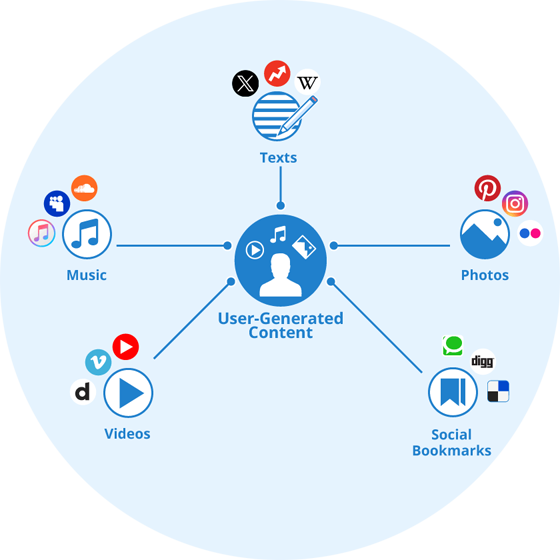UGC campaigns not only require creativity and commitment. As already indicated above, technical solutions are also necessary. Ultimately, the success of UGC also depends on how well it is organized, tested and disseminated. This is where DAM systems come into play, simplifying and optimizing the entire cycle of user-generated content.
Media aggregation
Users can upload their media directly to the system via a frontend (media portal) created in the DAM backend. API connections to cloud storage services or social media platforms also enable the indirect import of content. This professionalizes and accelerates the aggregation process.
Structuring
DAM systems enable the central storage and categorization of UGC. Content can be automatically tagged and sorted by relevance, for example based on hashtags, creation date or location.
Review and approval
A DAM system enables the efficient review of content. Clearly defined workflows ensure that UGC is quickly evaluated and released for various channels. AI-based tools can take over the automatic pre-analysis of quality and relevance. This speeds up the approval process enormously.
Rights and license management
It is often necessary to obtain usage rights in order to use UGC. With modern DAM solutions, approvals and licenses can be documented directly in the system. Legal risks are thus minimized.
Integration in campaigns
DAM systems facilitate the integration of UGC in marketing campaigns. Content can be seamlessly exported to various channels and enhanced with brand elements. This ensures that the content matches the brand identity.
Data-driven analysis
Analysis tools integrated into the system provide important insights into the performance of UGC campaigns. They identify particularly successful content, recognize interaction patterns and provide valuable data for the optimization of future campaigns.

 https://www.teamnext.de/wp-content/uploads/2024/11/ordnerstruktur-header.png
720
1800
Björn Buxbaum-Conradi
https://www.teamnext.de/wp-content/uploads/2022/03/teamnext-mediahub-logo-bunt.svg
Björn Buxbaum-Conradi2024-11-28 11:47:062024-11-28 16:16:28What defines a good folder structure
https://www.teamnext.de/wp-content/uploads/2024/11/ordnerstruktur-header.png
720
1800
Björn Buxbaum-Conradi
https://www.teamnext.de/wp-content/uploads/2022/03/teamnext-mediahub-logo-bunt.svg
Björn Buxbaum-Conradi2024-11-28 11:47:062024-11-28 16:16:28What defines a good folder structure


